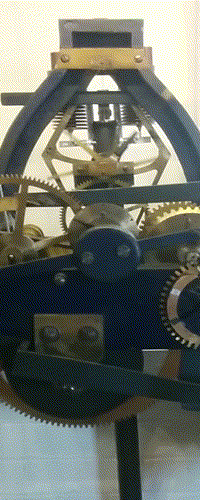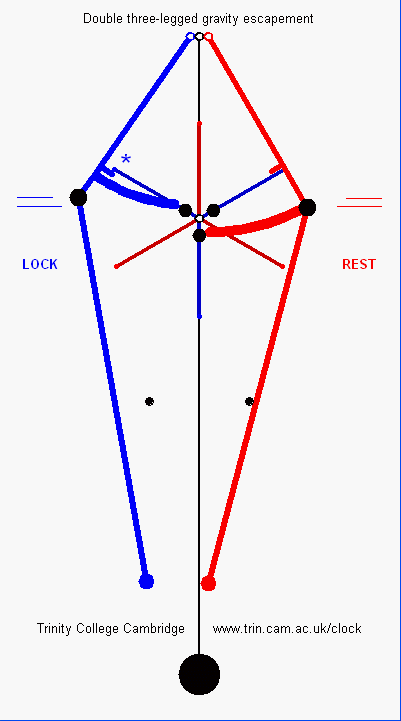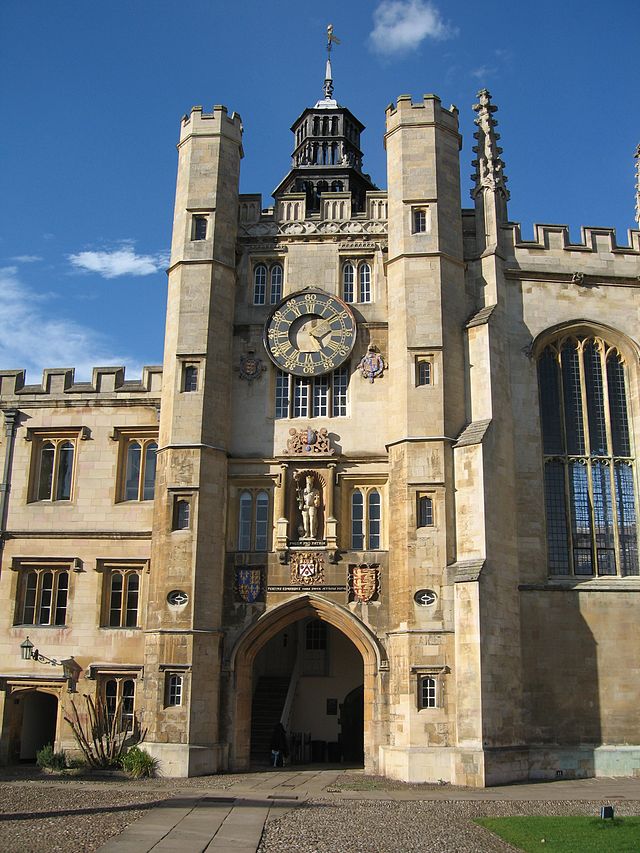
|
THE TRINITY CLOCK |


|
History of the Trinity Clock
The College clock is housed in one of the oldest buildings in Trinity: King Edward's Gate, otherwise known simply as the clock-tower. This gate originally formed a grand entrance to King's Hall, a foundation which was dissolved in 1546 and joined with Michaelhouse to found the new College of the Holy and Undivided Trinity. As part of the building works initiated under the Mastership of Thomas Nevile, this gate was taken down stone-by-stone and rebuilt 100 feet or so north of its original location, thereby helping to create Great Court on its current expansive scale.
A clock, dial-plate, and bell seems first to have been added to the clock-tower in 1610 by one Thomas Tennant, a citizen of London. The bell is still in place, and in use, and bears the inscription: TRINITAS · IN · UNITATE · RESONAT · 1610. RICARDUS · HOLD · FELD · ME · FECIT. (The Trinity resounds in unity. 1610. Richard Holdfield [or Oldfield] made me.) A new clock and dial-plate were put in place under the Mastership of Richard Bentley, in 1726–27. The original "1610" clock mechanism was given to the village of Orwell. It still runs today in the tower of the village church. Meanwhile in Trinity two new bells were provided for the chimes before the striking and the wooden bell-tower on top of the gate was modified from the original one constructed in 1610. This wooden tower was replaced by a replica in 1856–57. In 1910 the old clock was replaced yet again by the mechanism which is still now in place. It was built by Smith of Derby to a design by Lord Grimthorpe very much along the lines of the mechanism used for the clock in the Palace of Westminster ("Big Ben"). The clock is governed by a temperature-compensated pendulum 2 metres in length driven by a three-legged gravity escapement. It is a remarkable instrument, capable of keeping time to better than one second in a month without any intervention. Since it was replaced in the early eighteenth century, the Trinity clock has been notable for striking the hour twice, first on a low note (the 'Trinity' chime) and then on a much higher one (the 'St John's' chime). This phenomenon was recorded by William Wordsworth in his poem 'The Prelude' (1850): Near me hung Trinity's loquacious clock, Who never let the quarters, night or day, Slip by him unproclaimed, and told the hours Twice over with a male and female voice.
|
Contact: clockkeeper@trin.cam.ac.uk, Trinity College, Cambridge
